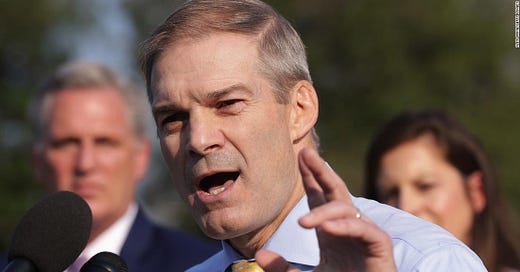
On Saturday, April 1, the emergency measures Congress put in place to extend medical coverage at the beginning of the Covid-19 pandemic expired. This means that states can end Medicaid coverage for people who do not meet the pre-pandemic eligibility requirements, which are based primarily on income. As many as 15 million of the 85 million people covered by Medicaid could lose coverage, although most will be eligible for other coverage either through employers or through the Affordable Care Act. The 383,000 who will fall through the cracks are in the 10 states that have refused to expand Medicaid.
The pandemic prompted the United States to reverse 40 years of cutbacks to the social safety net. These cuts were prescribed by Republican politicians who argued that concentrating money upward would promote economic growth by enabling private investment in the economy. That “supply side” economic policy, they said, would expand the economy so effectively that everyone would prosper. In 2017, Republicans passed yet another tax cut, primarily for the wealthy and for corporations, to advance this policy.
As the economy fell apart during the coronavirus pandemic, though, it was clear the government must do something to shore up the tattered social safety net, and even Republicans got on board fast. On March 6, 2020, Trump signed the Coronavirus Preparedness and Response Supplemental Appropriations Act, allocating $8.3 billion to fund vaccine research and give money to states and local governments to try to stop the spread of the virus. On March 18, he signed the Families First Coronavirus Response Act, which provided food assistance, sick leave, $1 billion in unemployment insurance, and Covid testing. On the same day, the Federal Housing Administration put moratoriums on foreclosure and eviction for people with government-backed loans.
On March 27, Congress passed the Coronavirus Aid, Relief, and Economic Security Act (CARES), which appropriated $2.3 trillion, including $500 billion for companies, $349 billion for small businesses, $175 billion for hospitals, $150 billion to state and local government, $30.75 billion for schools and universities, individual one-time cash payments, and expanded unemployment benefits.
Trump signed another stimulus package on April 24, 2020, which appropriated another $484 billion. And on December 27, 2020, he signed another $900 billion stimulus and relief package.
When he took office, President Joe Biden promised to rebuild the American middle class. He and the Democratic Congress began to shift the government’s investment from shoring up the social safety net to repairing the economy. On March 19, 2021, he signed the American Rescue Plan into law, putting $1.9 trillion behind economic stimulus and relief proposals.
Biden signed the Infrastructure Investment and Jobs Law, also known as the Bipartisan infrastructure Act, on November 15, 2021, putting $1.2 trillion into so-called hard infrastructure projects: roads and bridges and broadband.
On August 9, 2022, he signed the CHIPS and Science Act, putting about $280 billion in new funding behind scientific research and the manufacturing of semiconductors. And days later, on August 16, Biden signed the Inflation Reduction Law, putting billions behind addressing climate change and energy security while also raising money to pay for new policies and to reduce the deficit by raising taxes on corporations and the wealthy, funding the Internal Revenue Service to stop cheating, and permitting Medicare to negotiate with pharmaceutical companies over drug prices.
This dramatic investment in the demand side, rather than the supply side, of the economy helped to spark record inflation, compounded by supply chain issues that created shortages and encouraged price gouging. To combat that inflation, the Federal Reserve has been raising interest rates. Numbers released Friday show that inflation cooled in February, suggesting that the Federal Reserve is seeing the downward trend it has been hoping for, although there is concern that the sudden decision of the Organization of the Petroleum Exporting Countries (OPEC) this weekend to slash production of crude oil might drive the price of oil back up, dragging prices with it.
That investment in the demand side of the economy also meant that the child poverty rate in the U.S. fell almost 30%, while food insufficiency fell by 26% in households that received the expanded child tax credit. The U.S. economy recovered faster than that of any other G7 nation after the worst of the pandemic. Wages for low-paid workers grew at their fastest rate in 40 years, with real income growing by 9%. MIddle-income workers’ wages grew by only between 2.4% and 3.9% after inflation, but that, too, was the biggest jump in 40 years. Unemployment has fallen to its lowest level since 1969, and a record 10 million people have applied to start small businesses.
This public investment in the economy has attracted billions in private-sector investment—chipmakers have planned almost $200 billion of investments in 17 states—while it has also pressured certain companies to act in the public interest: the three major insulin producers in the U.S., making up 90% of the market, have all capped prices at $35 a month.
As the economy begins to smooth out, Biden and members of his administration are touting the benefits of investing in the economy “from the bottom up and the middle out.” They have emphasized that they are working to support unions and the rights of consumers, taking on “junk fees,” noncompete agreements, and nondisparagement clauses. After the collapse of the Silicon Valley Bank, the administration has suggested that deregulation of banking institutions went too far, and Biden has continued to push increased support for child care and health care.
A recent Associated Press–NORC poll shows that while 60% of Americans say the federal government spends too much money, they actually want increased investment in specific programs: 65% want more on education (12% want less); 63% want more on health care (16% want less); 62% want more on Social Security (7% want less); 58% want more spending on Medicare (10% want less); 53% want more on border security (23% want less); and 35% want more spending on the military (29% want less).
This puts the political parties in an odd spot. A week ago, Biden and members of the administration began barnstorming the country to highlight how their policy of “Investing in America” has been building the economy: “unleashing a manufacturing boom, helping rebuild our infrastructure and bring back supply chains, lowering costs for hardworking families, and creating jobs that don’t require a four-year degree across the country,” as the White House puts it.
Meanwhile, the Republicans are doubling down on the idea that such investments are a waste of money, and are forcing a fight over the debt ceiling to try to slash the very programs that the administration is celebrating. Ignoring that the 2017 Trump tax cuts and spending under Trump added about 25% to the debt, they are focusing on Biden’s policies and demanding that the government balance the budget in 10 years without raising taxes and without cutting defense, veterans benefits, Social Security, or Medicare, which would require slashing everything else by an impossible 85%, at least (some estimates say even 100% cuts wouldn’t do it).
As David Firestone put it today in the New York Times: “Cutting spending…might sound attractive to many voters until you explain what you’re actually cutting and what effect it would have.” Republicans cut taxes and then complain about deficits “but don’t want to discuss how many veterans won’t get care or whose damaged homes won’t get rebuilt or which dangerous products won’t get recalled.” Firestone noted that this disconnect is why the House Republicans cannot come up with a budget. “The details of austerity are unpopular,” Firestone notes, “and it’s easier to just issue fiery news releases.”
—
Notes:
https://www.whitehouse.gov/wp-content/uploads/2023/03/ERP-2023.pdf
https://www.cnn.com/2023/03/31/economy/pce-inflation-february/index.html
https://www.investopedia.com/government-stimulus-efforts-to-fight-the-covid-19-crisis-4799723
https://www.cbsnews.com/news/wages-surged-lowest-paid-americans-pandemic-covid-19/
https://www.cbsnews.com/news/gas-prices-opec-output-cut/
https://www.nbcnews.com/health/health-news/sanofi-insulin-price-cap-rcna75346
https://www.washingtonpost.com/us-policy/2023/03/06/biden-industrial-policy-business-government/
https://www.washingtonpost.com/opinions/2023/03/19/biden-fdr-clinton-center-triangulation/
https://apnews.com/article/spending-budget-poll-biden-cd55f1c3859b62a861cdbdc0cd23bd79
https://www.nytimes.com/2023/04/03/opinion/editorials/debt-ceiling-mccarthy-2023.html










I do believe our problem is a revenue problem, not a spending problem. After over 40 years of tax cuts, too much really is not enough? It seems that way. And why should we buy into any plan from a party that openly supports a criminal plan, to subvert elections and our government? I will take Joe Biden over President Fraud, any day. He is decent, honest, knowledgeable and more effective than I had hoped.
Let's cut to the quick here: people have internalized the falsity that to be responsible means to spend less. Nope. To be responsible means to spend **the appropriate amount necessary** to adequately deal with the issue at hand. You get what you pay for. If something in your house needs repair, and it costs $100 to fix it properly, but you either refuse to fix it because you don't want to spend the money, or you only spend $50 and do a slipshod job, that is not being responsible. That is being a half-assed penny pincher, and since it's definitely going to break again now, you've just wasted your money entirely. Such responsibility! As we would say when I was a kid "...NOT!"
Oh, and don't get me started on "running the government like a business." How about you run it like the thing that it is? Do you drive your car like a bicycle, or brush your hair like your teeth, or cook your oatmeal like your tater tots? Geezus, I hope not. No, folks who like the idea of treating the government like a business feel that way because they like the idea of business, and do not like the idea of government. Why not make the disliked thing more like the preferred thing? Well, guess what? Every damn developed human society has had a government for a reason.
This nonsense is triple hilarious given how big businesses never get accused of "recklessness" when pouring massive amounts of other people's money into complicated, evasive schemes to enrich themselves. No, no, no! That is what you call INVESTING! Perfectly sensible, and as the stakeholders of Silicon Valley Bank can attest, always a recipe for long-term stability and success!
I could go on and on, and get more and more sarcastic, but I am currently in my plaid pajamas and would like to maintain the midnight mood I am manifesting through this sartorial selection. So I will just say this: I'm a responsible adult. I'm a patriotic American. I am fine with paying my taxes, and I wouldn't mind a good deal *more* government spending, as long as my taxes get spent on *actual* responsible investments: fully-funded programs that will help make life easier in clear, direct ways for our citizens as a whole.
I would sooner spend a trillion dollars for universal childcare and eldercare, than spend one dime more on a fighter jet that cannot fly. I feel this way because I have altruistic values. How irresponsibly reckless of me!